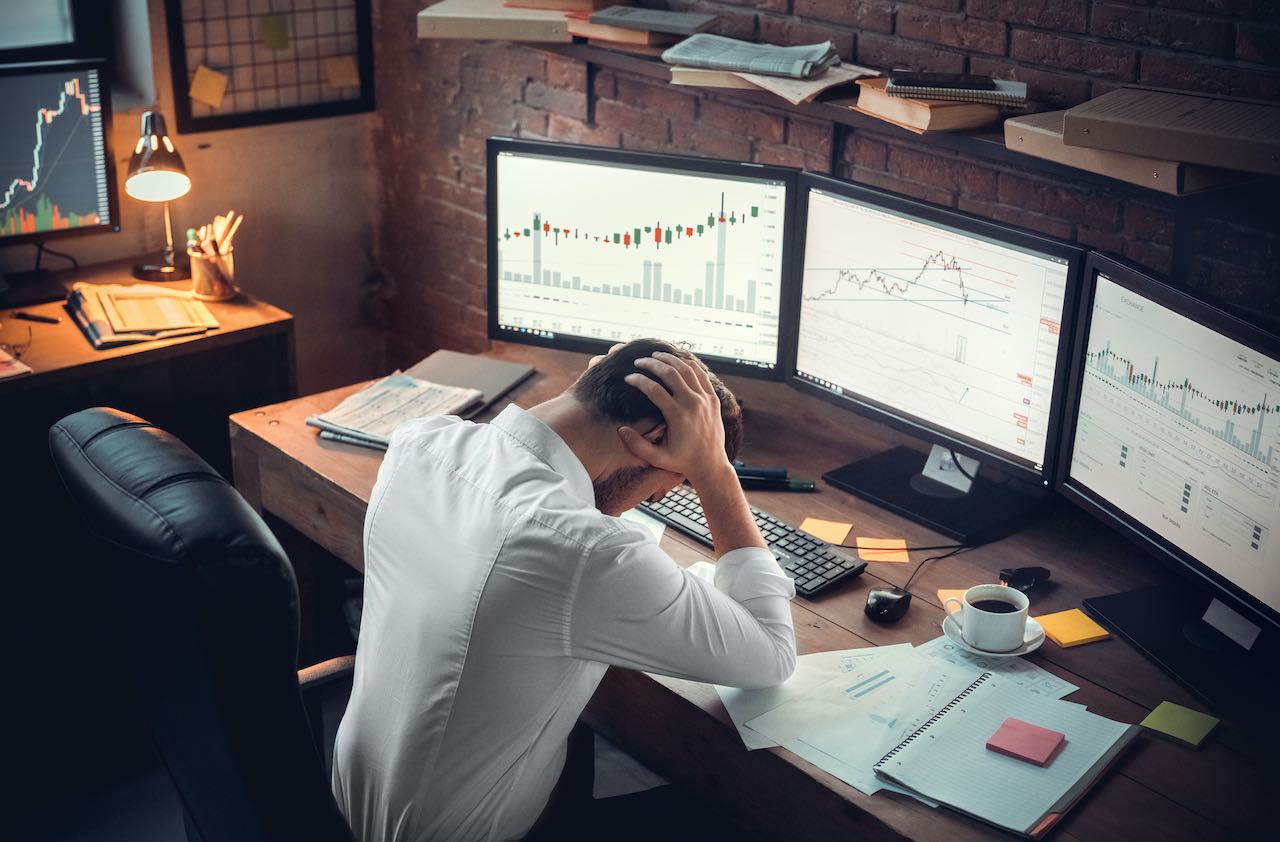Could Stocks Actually Climb With Bond Yields
Sometimes a market truism isn't. A recent study shines a new light on the relationship between stocks and interest rates.

The conventional wisdom holds that rising interest rates are sure to snuff out the 4½-year-old bull market in stocks. Action in the markets on August 15 buttresses the argument. Standard & Poor’s 500-stock index tumbled 2.4% as the yield of the ten-year Treasury bond surged to as high as 2.82%, before finishing the day at 2.76%.
TOOL: Compare Online Brokers
But now comes a fascinating report from the Leuthold Group, a Minneapolis-based investment research firm, that argues against the market’s recent action over the conventional wisdom. The report, written by Doug Ramsey, Leuthold’s chief investment officer, notes that the ten-year Treasury actually hit its record-low yield of 1.39% on July 24, 2012. From that date through August 14, the S&P 500 rose 29%, even though the ten-year Treasury climbed by 1.31 percentage points.
What’s more, the Leuthold study finds that stock prices and bond yields often rise in tandem, especially when yields start from a low base — which is precisely the case today. Since 1955, stock prices and bond yields have risen simultaneously about one-third of the time.

Sign up for Kiplinger’s Free E-Newsletters
Profit and prosper with the best of expert advice on investing, taxes, retirement, personal finance and more - straight to your e-mail.
Profit and prosper with the best of expert advice - straight to your e-mail.
The more-recent numbers are just as surprising. From May 1 through August 14, the yield on ten-year Treasury bonds jumped from 1.63% to 2.70%. Over that same period, Standard & Poor’s 500-stock index gained 7.2%.
Still, stock investors shouldn’t get too complacent, because I think it’s a near certainty that bond yields will continue to rise. Higher yields can hurt stocks because they make fixed-income investments relatively more attractive and because they have the potential to slow down economic activity — the housing sector being one notably vulnerable sector.
How rising yields affect share prices depends in large measure on where yields are starting from. The lower the absolute yield on the ten-year Treasury, the more likely stock prices will rise along with yields. Ramsey finds that stock prices often rise along with bond yields except when the ten-year Treasury yield is 6% or higher. A 6% Treasury tends to be bad news for stocks. That doesn’t mean stocks always go up when yields rise but remain below 6%, but it means they often do. “Periods of jointly rising interest rates and stock prices have been much more common than widely recognized,” Ramsey writes.
Why would bond yields and stock prices rise in tandem? “Rising rates occur as business prospects improve,” says Ramsey. “Often the best time to buy stocks is when the economy is recovering from a recession and rates are rising.”
The situation today differs from what’s normally seen during the latter stages of a business expansion. At that point, prices are starting to rise, and the Federal Reserve Board, to quash inflation before it becomes too big a problem, starts to raise short-term interest rates. Both rising inflation and rising short-term rates can kill a bull market in stocks.
Rising yields on medium-maturity and long-term bonds also spell trouble. When the yield on ten-year Treasuries surpasses 6%, bonds provide major competition with stocks for investor dollars. The higher bond yields go, the more likely they are to drive stocks down.
But rising yields can be a plus for stocks. The current bull market, which began on March 10, 2009, started just ten days before the beginning of a 1.31- percentage-point spike in the ten-year Treasury’s yield that took place over less than two weeks. Frightened investors used Treasuries as a refuge during those awful days, and rising yields and stock prices were both early signals that things were finally getting better.
That’s hardly the only time rising rates have accompanied rising stock prices. Leuthold identifies 12 such instances, including the current one, since 1955, the period covered by the study. During these periods, the yield on the ten-year Treasury rose an average of 1.69 percentage points, and the S&P 500 gained an average of 35.3%.
What about today? It is different this time. The Federal Reserve has bought up trillions of dollars in Treasury securities with the professed goal of stimulating the economy. The incredibly low interest rates triggered by “quantitative easing” have encouraged hedge funds and other speculators to borrow huge amounts of money to invest in all kinds of risky assets, including U.S. stocks and emerging-markets stocks.
Now, of course, the Fed is talking about tapering back on and eventually ending quantitative easing. But even when quantitative easing ends, the Fed has pledged to keep short-term interest rates low for some time to come. Longer-term rates seem almost sure to rise, but if the Leuthold study is right, the bull market in stocks could continue.
Ramsey himself isn’t so sure. He notes that the ten-year Treasury yield has risen a full percentage point from its low — not far below the average for periods when bond yields and stock prices have risen together. “The current episode of jointly rising yields and stock prices is fairly mature,” he says. Maybe so. But bond yields still remain extremely low by historical standards, meaning stocks could well go higher.
Steven T. Goldberg is an investment adviser in the Washington, D.C. area.
Get Kiplinger Today newsletter — free
Profit and prosper with the best of Kiplinger's advice on investing, taxes, retirement, personal finance and much more. Delivered daily. Enter your email in the box and click Sign Me Up.

-
 Stock Market Today: Stocks Soar on China Trade Talk Hopes
Stock Market Today: Stocks Soar on China Trade Talk HopesTreasury Secretary Bessent said current U.S.-China trade relations are unsustainable and signaled hopes for negotiations.
By Karee Venema
-
 2026 Disney Dining Plan Returns: Free Dining for Kids & Resort Benefits
2026 Disney Dining Plan Returns: Free Dining for Kids & Resort BenefitsPlan your 2026 Walt Disney World vacation now. Learn about the returning Disney Dining Plan, how kids aged three to nine eat free, and the exclusive benefits of staying at a Disney Resort hotel.
By Carla Ayers
-
 ESG Gives Russia the Cold Shoulder, Too
ESG Gives Russia the Cold Shoulder, TooESG MSCI jumped on the Russia dogpile this week, reducing the country's ESG government rating to the lowest possible level.
By Ellen Kennedy
-
 Morningstar Fund Ratings Adopt a Stricter Curve
Morningstar Fund Ratings Adopt a Stricter Curveinvesting Morningstar is in the middle of revamping its fund analysts' methodology. Can they beat the indices?
By Steven Goldberg
-
 Market Timing: The Importance of Doing Nothing
Market Timing: The Importance of Doing NothingInvestor Psychology Investors, as a whole, actually earn less than the funds that they invest in. Here’s how to avoid that fate.
By Steven Goldberg
-
 Commission-Free Trades: A Bad Deal for Investors
Commission-Free Trades: A Bad Deal for Investorsinvesting Four of the biggest online brokers just cut their commissions to $0 per transaction. Be careful, or you could be a big loser.
By Steven Goldberg
-
 Vanguard Dividend Growth Reopens. Enter at Will.
Vanguard Dividend Growth Reopens. Enter at Will.investing Why you should consider investing in this terrific fund now.
By Steven Goldberg
-
 Health Care Stocks: Buy Them While They're Down
Health Care Stocks: Buy Them While They're Downinvesting Why this sector should outperform for years to come
By Steven Goldberg
-
 Buy Marijuana Stocks Now? You'd Have to Be Stoned.
Buy Marijuana Stocks Now? You'd Have to Be Stoned.stocks Don't let your investment dollars go to pot
By Steven Goldberg
-
 4 Valuable Lessons From the 10-Year Bull Market
4 Valuable Lessons From the 10-Year Bull MarketInvestor Psychology Anything can happen next, so you must be mentally prepared.
By Steven Goldberg